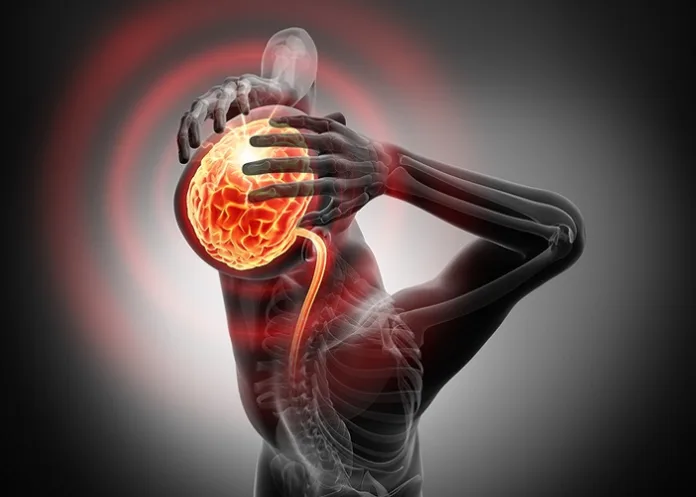US-based Vertex Pharmaceuticals has developed an experimental drug that relieves pain, blocking pain signals before they get to the brain, but which unlike opioids, works only on peripheral nerves – outside the brain and spinal cord – reducing the chances of addiction.
Last week the company said it had completed two randomised studies, the first in 1 118 people who had abdominoplasties and the other in 1 073 people who had bunion surgery. Both kinds are commonly used in studies of people with acute pain, the temporary kind brought on by something like a surgical procedure and that is likely to ease with time, reports The New York Times.
In its clinical trials, Vertex measured the drug’s effect with a standard pain scale in which patients rated pain severity from one to 10, with 10 the most severe. Those taking its drug had a statistically and clinically meaningful reduction in pain, it reports. A third study looked at safety and tolerability of the drug in people experiencing pain from a variety of conditions.
While the studies are yet to be published or presented, Vertex plans to apply to the US Food and Drug Administration by mid-year for approval to market the drug, a pill that, for now, is called VX-548.
Vertex has not said when the full results and data will be made available, but scientists who were not involved in the drug’s development said the information the company had released was promising.
Dr Henry Kranzler, professor of psychiatry and director of the Centre for Studies of Addiction at the University of Pennsylvania’s Perelman School of Medicine, called the drug “a therapeutic breakthrough”.
He said its development was based on a strong body of science and, at least for acute pain, looks very promising with an efficacy that, while not better than the opioid oxycodone, also is not worse.
For now, most people needing relief from moderate to severe pain have two options: drugs like ibuprofen and COX-2 inhibitors, or opioids. The drugs like ibuprofen are not very effective, and the opioids, as is well known, can be addictive because of how they work. There is no way to separate the effects of opioids – pain relief – from the side effects: changes in thinking, cognition, energy and emotions.
The opioid crisis, one of the gravest public health concerns in the United States, began more than two decades ago and included people who started out taking the drugs for pain but became addicted. As states tightened regulation of prescription opioids, many turned to illegal street drugs like heroin and fentanyl.
Though doctors are more cautious about prescribing opioids now, many still do so because there are few alternatives.
Efforts to develop a new class of pain-treating drugs began in earnest in the 1990s. Researchers asked if there were sodium channels specific for peripheral nerves. These are portals that open to send pain signals from the nerves to the brain and then close to stop transmitting.
If there were portals that only controlled signals from peripheral nerves, that suggested the possibility of drugs to block them and control pain without affecting the brain, and without causing addiction. Pain might be stopped at its source.
So researchers began scouring the globe for people with genetic mutations that prevent peripheral nerves from transmitting pain signals, or that made peripheral nerves signal pain nearly constantly. If they found those mutations, the genes involved could be targeted with drugs.
Eventually, they found both types of mutations.
In Alabama, one gene mutation caused a family to have a condition known as burning man syndrome that puts peripheral nerves into overdrive. People feel a searing pain that some have said is like hot lava inside them.
Any sort of warmth can bring it on, like wearing socks or a sweater or going outside when it is just 22 degrees C. The disease has driven some patients to suicide.
After years of searching, researchers found people with a gene mutation that led to the opposite effect. The discovery began with a teenage boy in Pakistan. He made money by walking on coals or cutting himself with sharp blades in street performances.
His relatives had the same mutation, with painless fractures, painless burns, painless tooth extractions and painless childbirth.
It’s not that people with such mutations felt less pain, but that they simply did not feel any pain.
Those mutations and subsequent research led researchers to discover that two genes are needed to transmit pain, known as Nav1.7 and 1.8. The race was on to find a drug based on one of those genes.
“Every big company worked on them,” said Dr David Altshuler, chief scientific officer of Vertex.
But it turned out to be a difficult task to find a drug that worked. Vertex, Altshuler said, spent 20 years on the project.
The result is VX-548. It inhibits Nav1.8, temporarily blocking the protein needed for the nerves to transmit pain signals.
The studies involved people with acute pain. But the company is now studying people with chronic pain from diabetic peripheral neuropathy and patients with a type of back pain, lumbosacral radiculopathy, caused by impairment or injury to a nerve in the lumbar spine.
For now, the Vertex drug, if approved, would only be used on a fairly narrow range of conditions. The greater need is for non-addictive drugs to control chronic pain, and while studies are under way, for now only those with acute pain would benefit.
See more from MedicalBrief archives:
US Appeals Court ruling paves way for billions in opioid settlements
CDC eases guidelines on opioid prescribing for chronic pain
Ibuprofen may worsen some chronic pain and increase risk of kidney injury in BP patients
Canada plans cigarette-style warning stickers for painkillers
New UK guidance: Acupuncture rather than drugs for chronic pain

